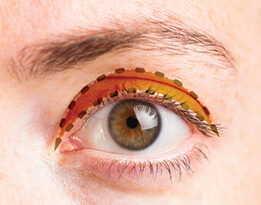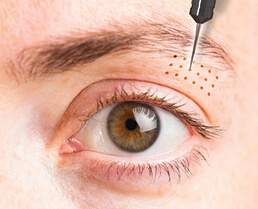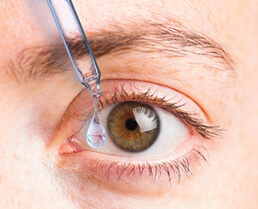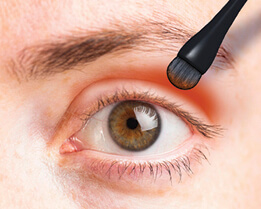THIS IS 50
The 50-Something Career Shift
For many Gen Xers, changing priorities means changing ambitions at work

AT AGE 50, Patti Thull ditched her 60-hour-a-week job in executive communications and became a freelance writer.
“I had stayed in corporate life because I was a single mom and needed the steady income and medical insurance for my daughter,” recalls the Warren, Michigan, resident. “But once she had successfully launched, I was free to reimagine my own future.”
For Tim Bodor of Sterling, Virginia, the lure was autonomy: He wanted more control over his schedule. With only two weeks per year of paid leave at his job in call-center operations, Bodor remembers, “I used half my PTO taking my kids to and from college.”
When Bodor was 54, his wife, Rebecca, bought a home-care-services franchise. Three years later, Bodor was able to ditch his day job to join the franchise full-time. For Bodor, that was the end of “working under other people’s rules.”
Many in their 50s have made similar shifts. While researching this story, we heard about a dermatologist-turned-veterinary-school-student, an ad-executive-turned-cleaning-supply-entrepreneur and a speech-therapist-turned-retail-worker, among others. Although national statistics on the phenomenon are elusive, 50-something workers have been taking unexpected career turns lately, experts confirm.
Work That Fits
Most of these workers are “downshifting to something that’s a little bit less stressful and has more flexibility,” says Geoffrey Sanzenbacher, a research fellow at the Center for Retirement Research at Boston College. Others are choosing to make ambitious leaps into new career terrain. Supporting all their pursuits is the low unemployment rate, which has opened up opportunities and empowered workers to take risks, Sanzenbacher notes.
Longevity is an impetus as well, adds Michael Clinton, author of Roar into the Second Half of Your Life (Before It’s Too Late). “The idea of having a new career in your 50s, which a generation ago would’ve seemed almost impossible, has now become a major reality,” Clinton says. “You can start a whole new career at 55 and have that career for 20-plus years.”
The unprecedented COVID pandemic has also had an impact. According to a new AARP study of older workers, 33 percent of 50-somethings say that living through the pandemic has made them want to improve their work-life balance; 62 percent say it has made them reprioritize how a job fits into their life.
Of course, for many mid-50s career changers, an outside circumstance such as a health issue or job loss forces their hand. That’s what happened to Dawn Steele Halbert of the Greater Chicago area, who was laid off from her job in media sales at age 59. Halbert responded by venturing into new territory, first cohosting women’s empowerment retreats, then entering the insurance business. “It’s very different from what I was doing before, but I love it,” Halbert admits.
Managing Expectations
Changing your career trajectory—even when it’s your idea—can feel daunting in your 50s, says Kerry Hannon, a workplace futurist and author of In Control at 50+: How to Succeed in the New World of Work.
One challenge is ageism, says John Dooney, a human resources knowledge adviser and senior certified professional with the Society for Human Resource Management. People may view you as overqualified for your new role or mistrust your grasp of related technology. And it may be harder than expected to give up the esteem that comes with a long track record of good work. “That can be demotivating and depressing to some workers,” Dooney points out. “They may think, I’ve worked my whole life, and nobody is valuing my experience.”
In addition, with a downshift there’s typically a reduction in pay, and that can cause angst if you’re not prepared for it, says Vicki Salemi, a career expert for the employment website Monster. You’re not the only one who needs to be prepared, either: If you’re in a relationship, your partner may balk at seeing the household’s finances reduced during your prime earning and saving years.
But for author Michael Clinton, the biggest deterrent to a successful shift is what he calls self-imposed ageism. “There’s a lot of negative self-talk that people pick up,” he explains. The key to ending that habit is recognizing pessimistic thoughts and replacing them with kinder—and more accurate—ones.
Pondering a job change yourself ? Experts offer this advice.
Look within. • Think about the type of work you find fulfilling, hobbies you enjoy, businesses you admire, even contemporaries whose jobs cause a twinge of envy. Those clues can help you determine where to look for your next role.
Mine your company. • Your current organization may have other jobs to explore. “Look around where you are right now,” Hannon advises. “You could make an internal career transition.”
Redeploy existing skills. • “You don’t need to reinvent yourself,” Hannon adds. Many tools in a mature worker’s toolbox are applicable to more than one field.
Keep learning. • Especially with the growth of online courses, it has never been easier to sharpen your skills, or develop new ones, before making a leap.
Honor your partner. • Recognize that a downshift will affect your whole household. After crunching the numbers, talk to your spouse about what you want and what it would mean financially, Salemi suggests.
Stay realistic. • Expect stumbling blocks and prepare for them. A savings cushion and a career coach can help you navigate the change. —Laura Petrecca
Among workers ages 50 to 59, in the past 3 years:
19% SAY THEY STARTED WANTING MORE MEANINGFUL WORK
64% SAY THEY TRIED TO REDUCE THEIR STRESS AT WORK
67% SAY THEY CONSCIOUSLY TRIED TO SLOW DOWN THEIR LIFE
SOURCE: THE REPORT “UNDERSTANDING A CHANGING OLDER WORKFORCE,” AARP RESEARCH, JANUARY 2023
Find a range of free career-boosting courses at aarp.org/skillsbuilder.
MY DAUGHTER, MY STYLIST

IN A CHARMING NEW TikTok craze called Turning My Mom Into Me, a Gen X mom first appears sporting her own modest, comfy clothing ... and then a modish outfit styled by her teen daughter. What’s striking is how confident and youthful the mothers look in their daughters’ attire. Maybe it’s because the kids’ clothes have a more modern vibe. Or maybe it’s because the moms have just been fussed over by their baby girls.


In a recent 12-week study, eating a low-fat vegan diet reduced hot flashes just as well as hormone replacement therapy did.
THIS STUDY OF MENOPAUSAL WOMEN, BY NEAL D. BARNARD, M.D., WAS PUBLISHED IN THE JOURNAL MENOPAUSE. THE DIET INCLUDED A HALF-CUP OF SOYBEANS DAILY.
MUSIC REVIEW
THE YEAR NEW WAVE CRESTED

HOW AWESOME was 1983? For many critics, it was the high-water mark of rock’s new wave. Who didn’t slow dance to “Every Breath You Take,” thinking the song was romantic and missing the creepy subtext? But the Police were just one head of the new wave Hydra. The Eurythmics, Talking Heads, Duran Duran: New wave was everywhere. It was the year that many of us discovered U2 (thanks to War), and R.E.M.’s Murmur prepared us for college. The wave may have soon receded, but in our hearts, 1983 bangers like “Karma Chameleon” never really went away. —Kelly Houston
MODERN DOPP KIT
MEN’S GROOMING IS BOOMING

IF YOU’RE a man who hasn’t used face cream since Clearasil, perhaps it’s time to reconsider. The market for men’s grooming products is exploding, according to industry analysts. With streamlined, unfussy packaging and natural, un-perfumy scents, today’s products address the drier skin and coarser hair that men start to notice in their 50s. Here’s how to use a few of the most popular new unguents.

Face oil • These are heavier than moisturizing creams, so a few drops spread over your skin in the morning may be all you need for a healthier-looking complexion.

Beard oil • Work two or three drops into your beard, then comb through for softer, more compliant whiskers. (If your beard is unruly, consider a balm or wax instead.)

Hair clay • Use sparingly to keep locks in place. Most men prefer a matte finish. Clays start harder than gels; rub the product in your palms before applying it. —Anissa Gabbara
MY FIRST TIME ...
DRIVING DAD AND HIS PALS

THE COMBINED AGE of my three passengers was 251, and their laughter was raucous as they swapped stories and memories.
Not long before, there would have been six people in my dad’s car: this trio plus their spouses. But the three friends are widowed now. In fact, this ride to dinner came after we attended a Mass in memory of my mom, who had died three months earlier. With my mother gone, I stepped into the role of chauffeur, so Dad could have a safe night out with pals.
One passenger was the mother of my lifelong friend Kelly. My father and Kelly’s mom used to give up their evenings dutifully to drive us everywhere. As a kid, I didn’t appreciate those rides. But what our parents did for us back then served a deeper purpose: to instill in us the value of being with friends. I know now that a ride like that, filled with joy and jokes, can be as meaningful as wherever it takes you.
This trip was my first chance to return the favor to my dad. And I couldn’t wait to tell Kelly all about it. —Sharon Waters
WHAT SHOULD I DO?
‘I Gave My Kid Money—But Not for That!’

JON HAD DECIDED to help fund his daughter and her partner’s new bakery business. But when they shared plans for a Scandinavian vacation, Jon’s resentment started to rise. As a psychologist, I have some advice for parents in this position. Helping your child financially doesn’t give you the right to monitor their spending. If you suspect they’re being irresponsible, avoid anger and accusation.
When Jon gently raised the issue with his daughter, it turned out that the couple had received plane tickets as a gift from her partner’s mother and were pinching pennies to make the trip happen. Still, it raised some key points. Before lending money, make sure you can afford to lose it. Also make sure you trust your adult child. Finally, grant them an occasional splurge. —Laurence Steinberg, author of AARP’s You and Your Adult Child (April 18)
WHO NEEDS EYELID WORK?

In your 50s your eyelids can start to droop and even limit your vision. Two surgeons—Joseph Serletti, M.D., chief of plastic surgery at Penn Medicine, and Nicholas Mahoney, M.D., of the Wilmer Eye Institute at Johns Hopkins Medicine—helped us consider the full range of options.

METHOD: UPPER-LID BLEPHAROPLASY
WHAT IS IT? Surgery to remove loose, excess skin on the eyelid. Also called an eyelid lift.
PROS: Noticeable, lasting results.
CONS:
→ Initial recovery takes 10 to 14 days.
→ Can worsen dry-eye symptoms.
→ Often not covered by insurance.
PRICE: From $2,000 for outpatient surgery to $10,000 for a hospital procedure, depending on the complexity of your case.

METHOD: PTOSIS REPAIR
WHAT IS IT? Surgery to tighten a muscle in the upper eyelid.
PROS:
→ Offers lasting results.
→ Insurance may cover this procedure if drooping eyelids have affected your vision.
CONS:
→ 10 days of post-surgery rest.
→ Procedure doesn’t resolve excess skin.
→ There’s a chance of irritation, dryness and eye asymmetry.
PRICE: $3,000 to $7,000, depending on the complexity of treatment and whether both eyelids are involved.

METHOD: NONSURGICAL EYELID LIFT
WHAT IS IT? Botox or dermal fillers are injected mostly around your eyebrows, slightly lifting them and thereby your lids.
PROS:
→ Takes 10 to 20 minutes, with no recovery time.
→ Fillers can be dissolved if you’re unhappy with them.
CONS:
→ Not a permanent solution.
→ Botox lasts three to six months; fillers last 12 to 18 months.
PRICE: Botox: $400 to $800 per treatment; fillers: $800 to $1,100 per treatment.

METHOD: PRESCRIPTION EYE DROPS
WHAT IS IT? An FDA-approved medication called Upneeq temporarily lifts droopy lids caused by ptosis (a weakened eyelid muscle).
PROS:
→ Easy, once-a-day application.
CONS:
→ Several possible side effects, such as eye pain or redness.
→ Not typically covered by insurance.
→ Doesn’t correct for excess skin.
PRICE: $160 for a 30-day supply; $240 for a 45-day supply.

METHOD: CONTOURING MAKEUP
WHAT IS IT? To hide drooping eyelids, use a paler eye shadow across the lid and a darker one in the crease, with highlighter below your brow bone.
PROS: If you already wear eye makeup, it’s a simple modification to your daily routine.
CONS:
→ Could look heavy.
→ Doesn’t address any vision issues.
PRICE: Eye shadow palette: $10 to $50. —Niamh Rowe
Learn more about caring for your eyes at aarp.org/eyecenter.
HOW TO GET YOUR SCREEN TIME DOWN

GEN XERS SPEND an average of 169 minutes per day on their phones; two-thirds say they’d like to reduce that number. To start, experts say:
Know your goal. Having a desired use for freed-up time matters a lot.
Set time limits. Make alerts to tell you when you’ve gone over your allotted phone usage.
Create phone-free zones. Some examples are your bedroom and your dinner table. —N.R.
MEMBER CHECKLIST

PLAN A TRIP! Find destination guides, planning help and ways to save on car rentals, hotels and cruises. aarp.org/travelplanning
REFER A FRIEND Get three months of free membership when a friend joins AARP. aarp.org/invite-friend
DAILY UPDATES The AARP Now mobile app gives you relevant news, discounts, local events and member info. aarp.org/mobile
